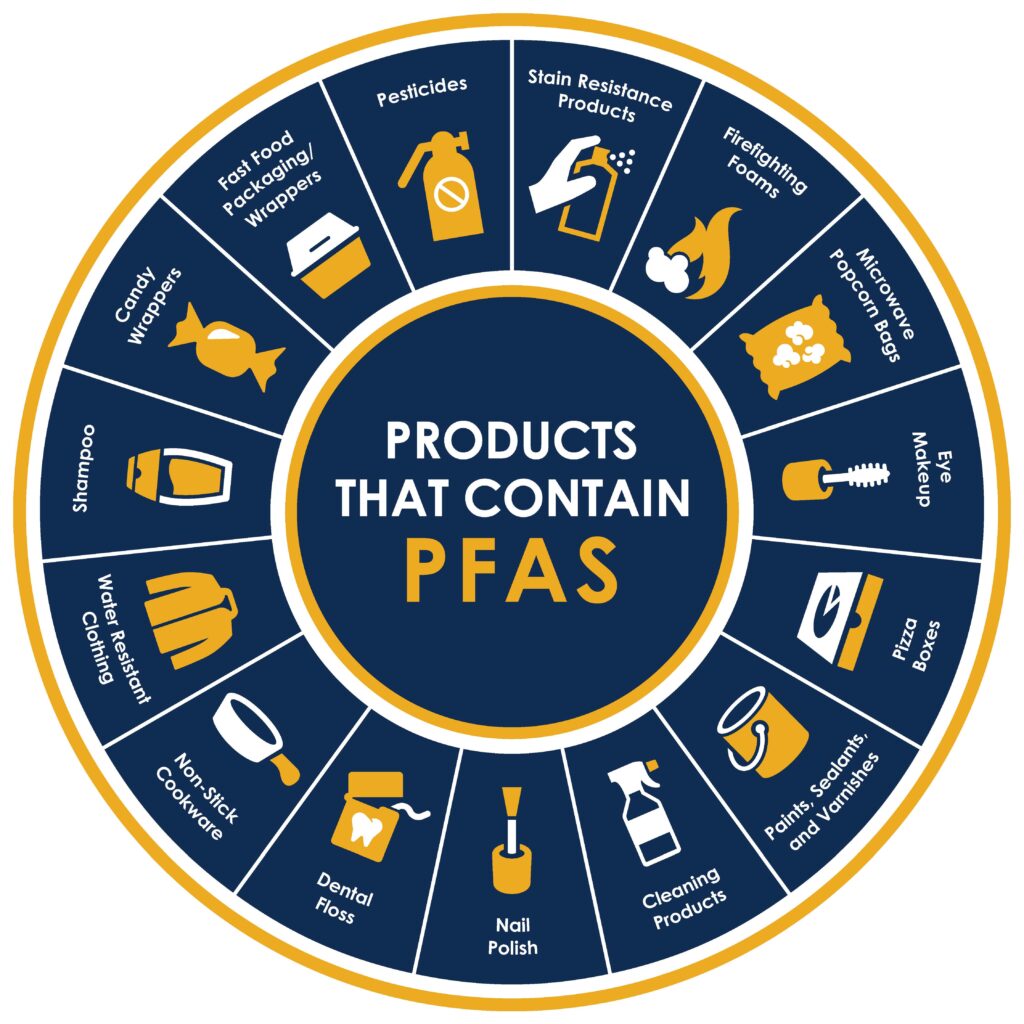
Why PFAS Pose a Threat
The USEPA has recently laid out a Strategic Roadmap to deliver tangible public health benefits for communities across the United States suffering from exposure to PFAS pollution. PFAS compounds (per-and poly-fluoroalkyl) compounds are known as forever chemicals. Since the 1950s, this extensive family of chemical compounds has been widely used for a variety of purposes such as: non-stick products, firefighting foam, personal hygiene products and coatings on food packaging, outdoor clothing, and carpeting. PFAS are invisible but everywhere in our daily lives.

We now know more than ever about exposure and PFAS build-up in our bodies over extended periods of time – and the long-term health effects these chemicals pose. PFAS compounds are known to bioaccumulate within our bodies and in the natural environment. Studies indicate that exposure to sufficiently elevated levels of certain PFAS may cause a variety of health effects including developmental impacts in fetuses and infants, and effects on the thyroid, liver, kidneys, certain hormones and the immune system. Ongoing environmental data collection also indicates these compounds are mobile and don’t readily degrade in the environment.
Requirements for Treated Wastewater are Changing
Publicly Owned Treatment Facilities (POTWs) will soon notice new requirements for PFAS monitoring in their National Pollutant Discharge Elimination System (NDPES) discharge permits for their wastewater treatment facilities (WWTF). In fact, many New England communities have already received new NPDES permits that include treated effluent and sludge monitoring and reporting for PFAS analytes. All POTWs will be required to monitor for PFAS regardless of the design flow of the WWTF.
Some POTWs are now required to begin, at a minimum, annual wastewater sampling from known PFAS contributors such as airports, landfills, car washes and any known source of PFAS. This requirement is a USEPA data base gathering exercise for now, there are no federal regulatory requirements…. yet! (Keep an eye on local and/or state requirements!) The data gathered over the next five years across New England (and nationally) will be used to further define the requirements for controlling disposal of PFAS into the environment.
POTWs …. Know your contributors!
Intervening at the beginning of the PFAS lifecycle before these compounds enter the environment is a foundational element of USEPA’s Strategic Roadmap. The intent is to pursue a comprehensive approach to prevent PFAS from entering air, land, and water at levels that can adversely impact human health and the environment. To meet this goal, it is important to understand where the chemicals originate. Developing a comprehensive Master List of Industrial Users (IUs) and commercial businesses that discharge to the POTW is a good place to start.
Often POTWs have a list of large IUs known as Significant Industrial Users as part of their Industrial Pretreatment Program (IPP); however, PFAS sources can be contributed by small and medium users and, of course, residential users. Many smaller POTWs do not have an approved IPP and, therefore, might not have a current IU list. Regulatory databases and internet web searches are useful tools in the meantime.
Through our IPP work, Hoyle Tanner has determined that the most useful and efficient method of finding PFAS sources by contributors is to reach out to businesses directly to identify Standard industrial Classification (SIC) codes and raw product inventories.
Understanding production processes as well as chemicals used for cleaning and in wastewater treatment also gives insight into possible PFAS source substitution and/or elimination. State Offices of Technical Assistance are reliable sources for POTWs and businesses for free, confidential information for PFAS source reduction, elimination or treatment.
If resources allow, conducting an inspection of the business is a good opportunity to see raw materials used and products made, and to identify an appropriate wastewater sampling location should future wastewater sampling be required. Should POTWs wish to be proactive prior to the issuance of new NPDES PFAS sampling requirements, grab samples using Draft Method 1633 is recommended by USEPA since it is now multi-laboratory validated and will soon be included in 40 CFR Part 136.
Hoyle Tanner’s Northeast Municipal Engineering services Group provides technical assistance and resources for Industrial Master List preparation to assist communities with identifying potential PFAS contributors. Learn more about our wastewater services, or reach out to me or Heidi Marshall!
It’s Hoyle Tanner’s 50th anniversary this year! Keep an eye on our Facebook, LinkedIn, and Twitter feeds for articles and anniversary news!










